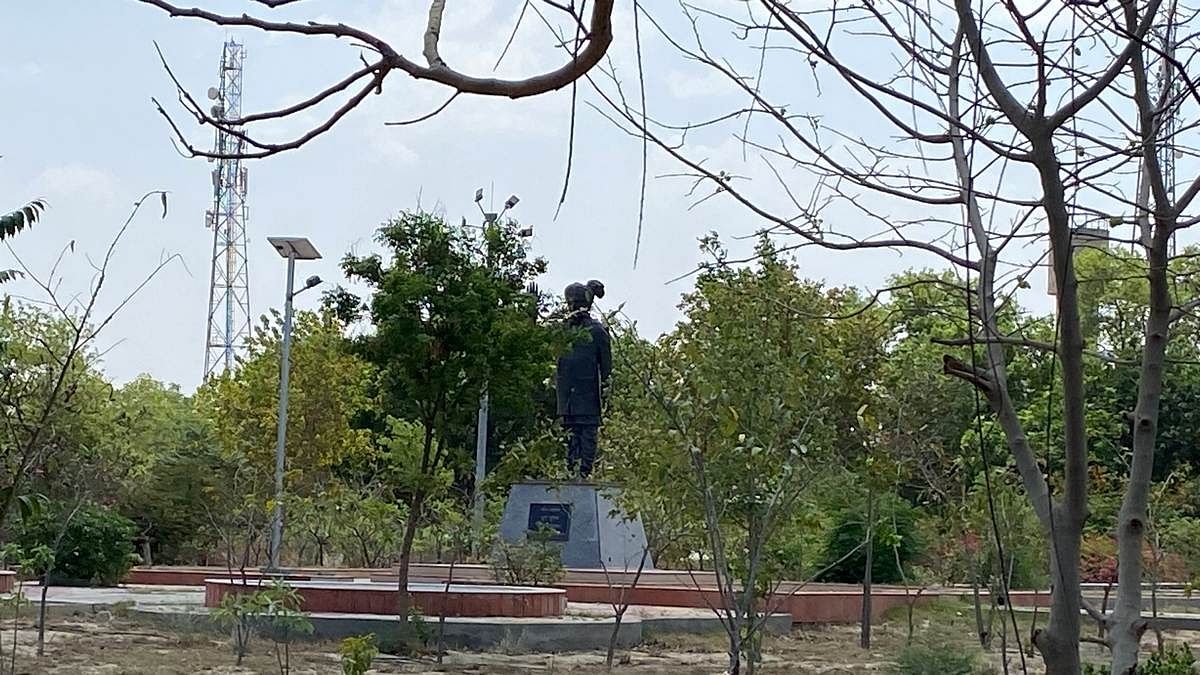“The tallest among them was Chaudhary Devi Lal, who became Deputy Prime Minister. He could have been the PM but he preferred to hand over the taj (crown) placed on his head to VP Singh. But looking at the plight of this village, you wouldn’t think it was privileged in any way.”
As Haryana gears up to vote for the Lok Sabha elections of 25 May and for the assembly polls later this year, the residents of Chautala are running low on hope. They claim that Chautala has always been a victim of politics, as whenever members of the Devi Lal clan have not been in power at the state level, the villagers have suffered because of the neglect of those at the helm, with roads, hospitals, and water supply all going to seed.
Jat leader Devi Lal served as Haryana Chief Minister from 1977 to 1979 and again from June 1987 to December 1989. After this, until 1991, his son Om Prakash Chautala, along with proteges Banarasi Dass Gupta and Master Hukum Singh, took turns as CM. Om Prakash Chautala then held the CM position from 1999 to 2005. Dushyant Chautala, Devi Lal’s great-grandson was Deputy CM from 2019 to March 2024 before his party, the Jannayak Janata Party (JJP), ended its alliance with the BJP.
The village falls in Dabwali assembly segment of Sirsa Lok Sabha constituency, where the MLA is Congress leader Amit Sihag. His great grandfather Tara Chand Sihag and Devi Lal’s father Lekh Ram Sihag were brothers.
In Chautala, even those who are too young to remember the ‘good old days’ talk wistfully about them.
“It’s been twenty years since the Chautalas’ raj ended, and subsequent governments haven’t even bothered to repair the roads they built,” rued Pawan Kumar, a resident in his early 30s. “When Om Prakash Chautala was in power from 1999 to 2005, he built a power house in the village to ensure a steady electricity supply. But ever since his government fell, we’ve faced constant power cuts. During Chautala’s rule, we would request a brief closure of the ‘moghas‘ (canal outlets) to manage excess water flow to our fields. Now, we are witnessing three weeks of closure after getting water for a week.”
Also Read: 2 of Haryana’s 3 ‘Lal’ dynasties are out of LS poll fray this time, breaking quarter-century streak
A village in the shadows
Every street corner political discussion in Chautala circles back to the village’s fall from grace after Devi Lal and Om Prakash Chautala’s chief ministerships.
“They built the hospital, but the subsequent governments didn’t provide the doctors, staff, and medicines; they gave the roads and streets but even the potholes haven’t been repaired after they left,” said resident Balwant Sihag, as he rested on a bench with a group of four to five others.
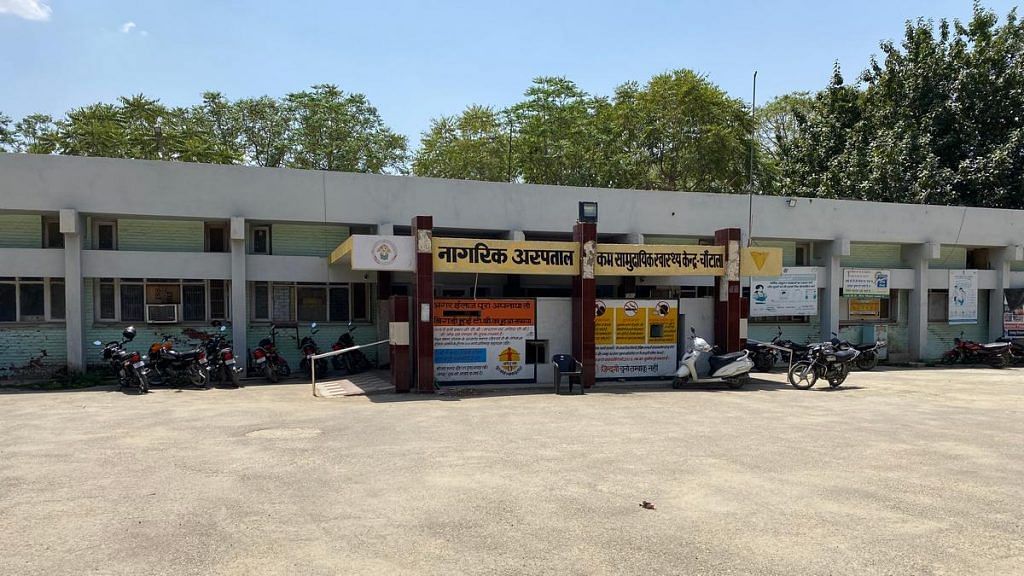
“An indoor stadium was announced when Devi Lal was the CM in 80s. However, work never began on the project until Dushyant Chautala became the deputy CM in the Manohar Lal Khattar government and took an interest in this project. Now, the work has just started but he is no longer in power. Let us see what happens to the project now,” he added.
Another big issue here is water quality. In the absence of a consistent canal water supply, residents are forced to rely on brackish subsoil water, which is high in impurities and total dissolved solids (TDS), according to Jakhar.
“We have a civil hospital but there are not enough doctors, and medicines are always scarce. Hardly any people go to the hospital. People have to get treatment from private doctors,” he added.
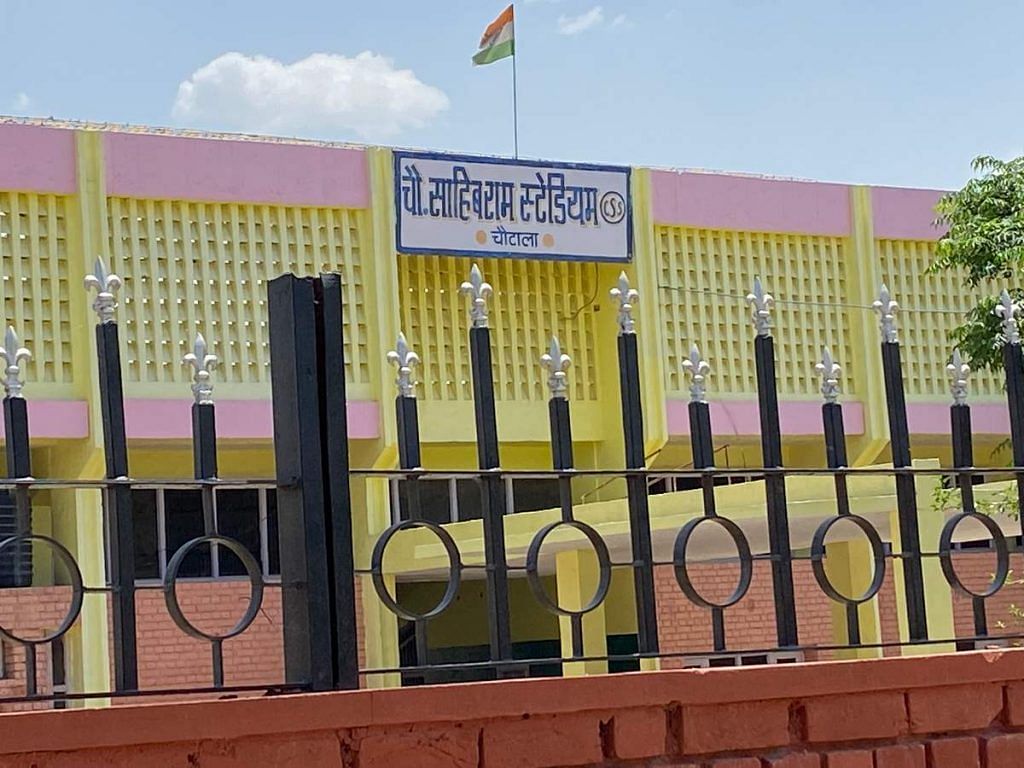
Chautala residents also compare their condition unfavourably with the pocket boroughs of other Haryana political dynasties, especially Hisar district’s Adampur, the stronghold of late former CM Bhajan Lal and his descendants Kuldeep Bishnoi and Bhavya Bishnoi.
“Adampur today has the best of infrastructure— colleges, hospitals, schools, and good roads. Bhajan Lal ensured jobs in every household of the constituency. But Chautala doesn’t have a college. Our children, including girls, have to travel 70 kilometres to and from Dabwali for higher education after class 12. Compared to Adampur, we stand nowhere,” said Sihag.
However, Radhe Shyam, a villager from the OBC community, claimed that four or five youth had been appointed to government jobs during the present BJP dispensation.
“The system of recruitment has changed now. During the present government, jobs are being given on merit,” he said. “Earlier, some people got jobs when Chautala’s Indian National Lok Dal (INLD) was in power, but no one was selected during the ten years of the Congress rule after him.”
5 current MLAs & a fiery speech
While the glorious past may have faded, the state assembly still houses five MLAs from Chautala village, each from different political backgrounds—Ranjit Singh from Rania, Abhay Chautala from Ellenabad, Dushyant Chautala from Uchana Kalan, Naina Chautala from Badhra, and Amit Sihag from Dabwali.
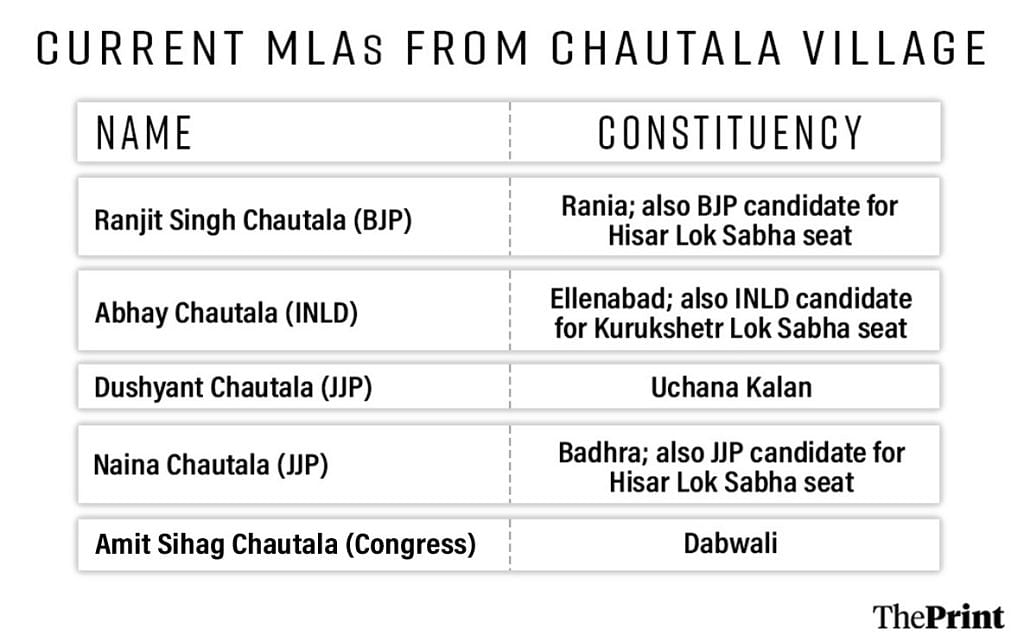
Speaking to ThePrint over the phone, Sihag, a Congress MLA whose Dabwali assembly seat also includes Chautala village, said he had raised the problems of his village in the state assembly during the winter session last year.
Sharing a 44-minute video of his speech, Sihag said that the other four MLAs from Chautala village were present in the House when he listed those problems.
“Adhyaksh Mahoday (Speaker, Sir), several members of this House use Chautala village’s name with their own. We all derive a lot of power from that village. However, Chautala village is deprived of basic amenities today. The village of five MLAs has to feel ashamed every day. The hospital of this VVIP village has merely become a place from where patients are referred to other hospitals. It’s devoid of all facilities,” Sihag said in the video.
He also appealed to the three Chautala village MLAs who were then part of the BJP-JJP government—now-ex deputy CM Dushyant Chautala, minister Ranjit Singh, and Dushyant’s mother Naina Chautala. “We should work to improve the plight of the village,” he said.
However, Sihag told The Print that subsequent actions have been insufficient.
“After this, the government sent two doctors but nothing has changed much for the village. If the Congress comes to power after the 2024 assembly polls, I will definitely work to improve the conditions of my Chautala village,” said Sihag.
Notably, two MLAs from Chautala are pitted against each other from the Hisar Lok Sabha seat, BJP’s Ranjit Singh and JJP’s Naina Singh Chautala. A third leader from Chautala, Sunaina Chautala is also in the fray on an INLD ticket.
Also Read: Facing farmers’ ire & exodus, JJP’s Ajay Chautala willing to join INLD, but homecoming to prove tough
‘They don’t visit much’
Chautala, a large village in Haryana with a population of 16,178 (2011 Census), encompasses three nearby hamlets. Each hamlet is dominated by a different Jat gotra—Saharan, Sihag, and Godara.
According to septuagenarian Pooran Chand Jakhar, Jats of the Saharan Gotra were the ‘original’ inhabitants of Chautala village. Later, around 1919, Jats of Godara Gotra and Sihag Gotra (Devi Lal’s ancestors) migrated from Rajasthan’s Bikaner district and settled in Chautala.
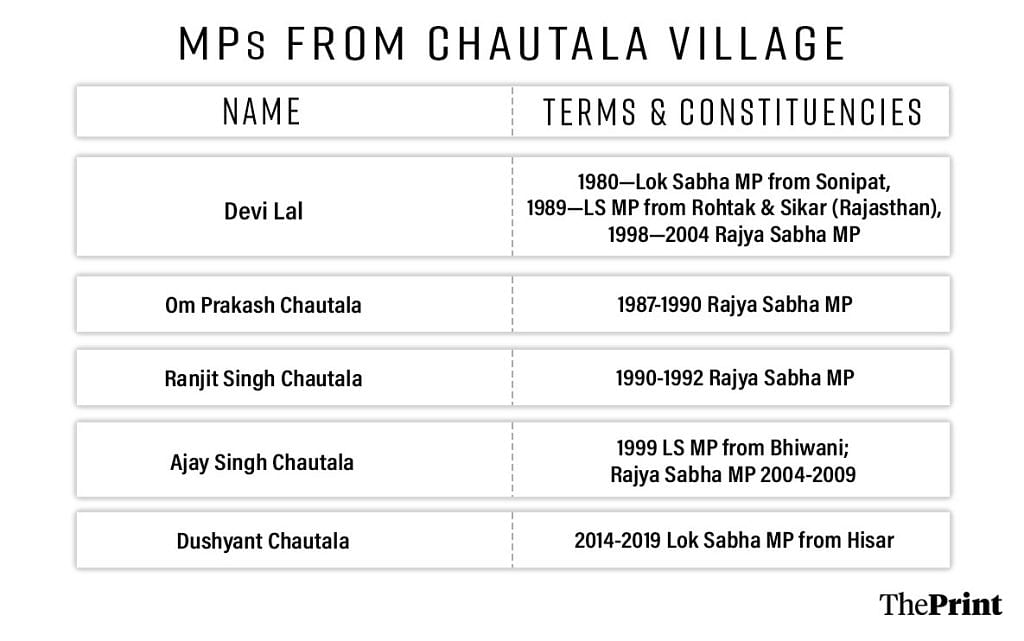
In the following years, Devi Lal’s ancestor Teja Ram Sihag built his farmhouse in his agriculture fields. Today, this is a hamlet known as Teja Khera (khera means a small village). Similarly, the ancestors of Godara Gotra, Asa Ram Godara, and the ancestor of Saharan Gotra, Bharu Ram Saharan, built their farmhouses and now, their villages are known as Asa Khera and Bharu Khera respectively.
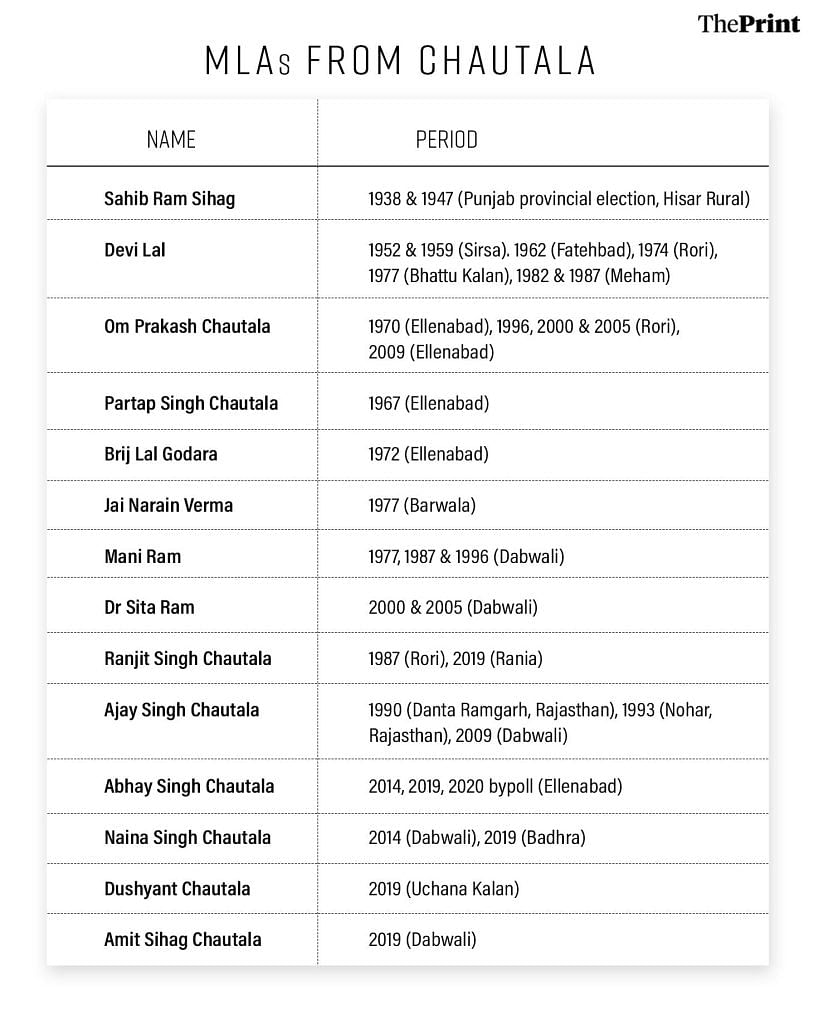
Former Dabwali MLA Dr Sita Ram, an INLD leader and a dentist by training, shared fond memories of Chautala village’s time in the sun, and how Devi Lal helped uplift marginalised communities.
“Chaudhary Devi Lal was a big landlord but still worked to improve the lives of mujaaras (landless farm labourers). He gave up part of his own land for the mujaaras when the land ceiling laws were introduced in 1972. When Devi Lal became the chief minister for the first time in 1977, people brought him to the village perched on an elephant’s back,” he said.
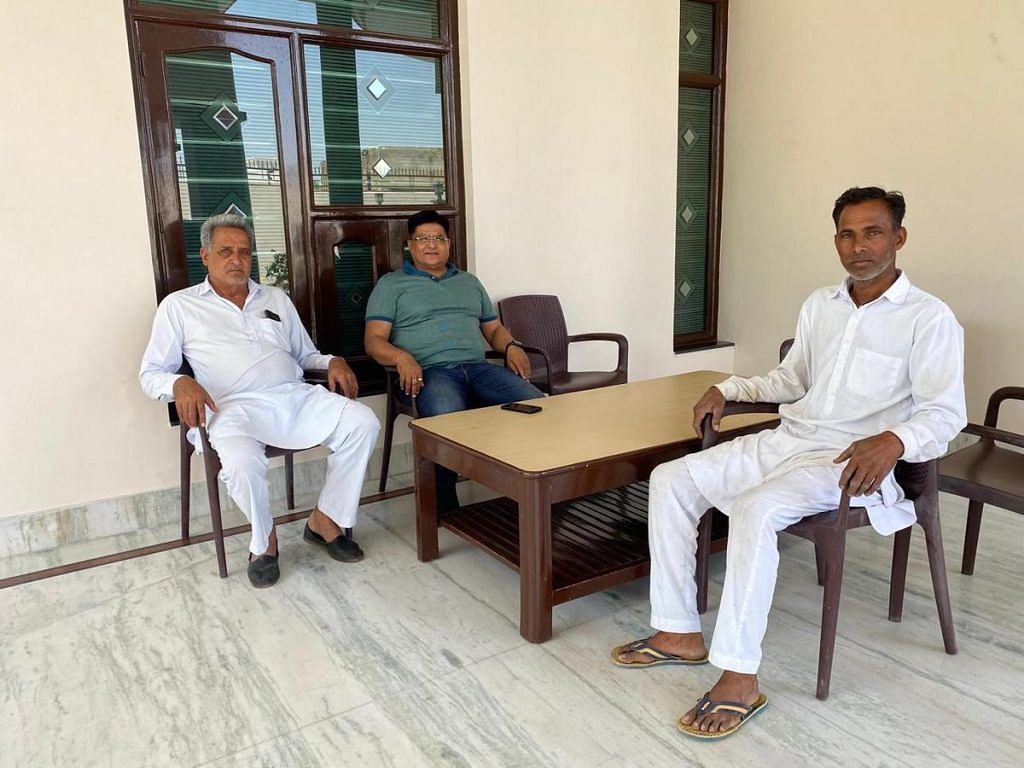
Sita Ram, who comes from a Dalit family, followed in the footsteps of his father, Mani Ram, who was also a three-time MLA from Dabwali. But his grandfather Kallu Ram was a farmer who worked in the fields of a prominent Godara family.
“When Devi Lal entered politics in the early 50s, my grandfather joined him,” he said. “Then in 1977, Devi Lal made my father Mani Ram, then an assistant food and supplies officer in Haryana, resign from his job and contest the election from Dabwali. This is how our family came into electoral politics,” he recalled.
Today, however, there’s much less political activity here.
“Bade Chautala Sahab (Om Prakash Chautala) does visit the village every time he comes to his farmhouse in Teja Khera,” said Pawan Kumar. “But the others hardly come.”
(Edited by Asavari Singh)
Also Read: Haryana power game: Khattar’s resignation accepted within hours, Ranjit Singh’s pending for 1 month

